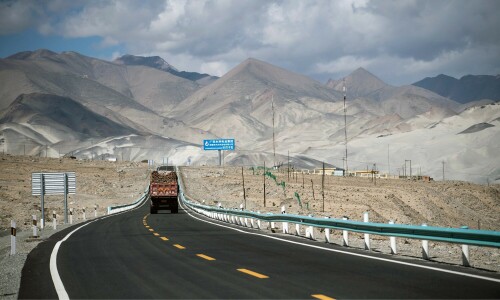KARACHI: “The results are out! I scored the highest marks for the fifth semester in a row,” exclaims ecstatic Sehrish, a journalism student at the University of Peshawar. Her excitement, however, withers once reality sets in. “I don’t share my results with my parents … they don’t understand what it means to me,” laments Sehrish.
The quota system has for long ruled educational institutions in Pakistan. In 2014, the Pakistan Medical and Dental Council abolished merit-based admissions policy for medical colleges and instead reserved 50 per cent seats for boys and the other 50pc for girls. The decision came following the growing trend among girls of acquiring medical education, and then leaving the profession after having done so.
Although, the trend has marginally dipped over the years, the decline in percentage of females in classrooms translating into professional spaces persists. Of the many fields lacking women practitioners, the news industry — traditionally run by men — despite progressing in the digital era, is yet to witness the female top scorers in academia attaining top echelons in media organisations.
“Out of 30 female students, only eight have internship experience in the English section of the programme,” says Zaina Rizvi, a master’s student of mass communications at Karachi University. “In the Urdu section around six out of 20 girls have work experience,” she adds.

Most girls are willing to avail work opportunities but due to permission constraints from parents given the odd working hours and mobility issues, they have to turn the offers down, regrets Rizvi.
A research study, Media and Gender in Asia-Pacific, undertaken by the International Federation of Journalists in line with Unesco’s Communication and Information Programme for 2014 to 2017, reveals that more women had postgraduate degrees (nearly two-thirds of them) and had done professional courses in journalism (over half).
“According to our findings, female to male ratio in the mass communication departments of universities was 60:40, but this was reversed when it came to actually joining the media for work, with fewer women doing so, possibly due to pressures from their families and/or society,” shares the director of the Uks Research Centre.
Nargis Baloch, the first and so far only woman president of the Hub Press Club, is editor of Intekhab — an Urdu daily that focuses on news about Balochistan — and oversees a staff of 100 men. “In my 24-year journalism career, I can’t recall having a single girl come for training,” Baloch tells Dawn.
“Media houses here to date don’t have separate washrooms for men and women,” she laughs, adding that news agencies abroad are eager and find talent from Balochistan for reporting, but the local organisations refuse to accept that women too have a voice to be heard.
Echoing similar sentiments, Tayyaba Farhat Siddiqui, the first woman to be nominated from Azad Jammu and Kashmir for the US Department of State’s community college initiative journalism programme, discloses: “We conducted a workshop titled ‘women and media’ in University of Azad Kashmir and more than 100 girls displayed interest in mass communications. Sadly, no one was willing to help these girls pursue their interests.”
In spite of the androcentric milieu, women media students have to contend with a cultural bias that trivialises their abilities and resents their achievements. “The past few graduating batches have seen women securing top positions. Unfortunately though, misogynist tendencies exist within academia as well,” denounces Dr Faizullah Jan, chairman of the department of mass communications and journalism at Peshawar University. “The environment within academic institutes is not conducive to offering opportunities to these talented students,” he says.
Inarguably, times are changing and aspiring students are determined to finding alternatives to suitable career choices. “We have female students in Beaconhouse National University (BNU), Lahore, in media and TV departments from far-flung areas like the southern Punjab belt who joined the university with a clear mind and resolve to make a career. They live in hostels and work long hours, till late in the night on their assignments,” asserts Urooj Samdani, head of the theatre, film and TV department at the university.
Published in Dawn, March 8th, 2017













































